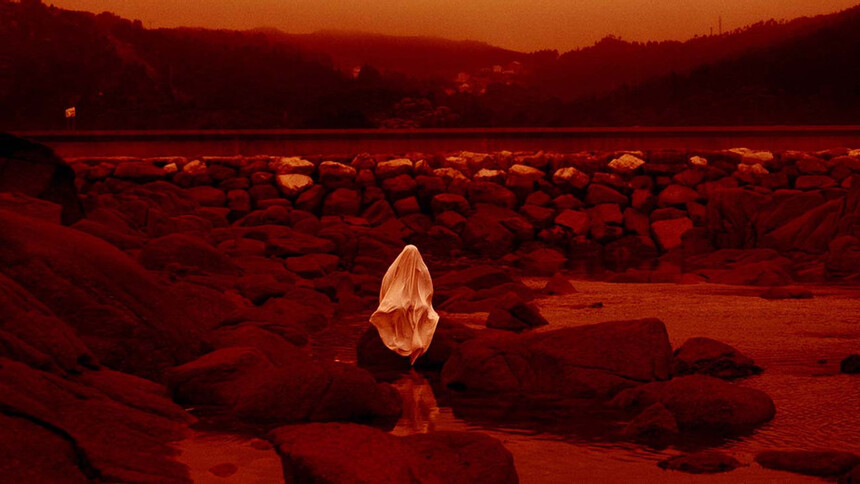Montreal Nouveau 2020 Review: RED MOON TIDE, We Are Left to the Witches and Monsters

In Galicia, where forests meat a rugged and dangerous coastline, Rubio has gone missing. The local village's resident diver, he would search for the bodies of those lost to the rough seas, or possible eaten by the monster that lurks under the waves. The village, already suffering from the various ills of the 21st century - capitalism, crashed economy, climate change - now seems to have come to a literal standstill with the loss of its most beloved son.
Through this landscape of moving water and wind, and villagers frozen in time and loss, come three witches. Acting as detectives and cleaners, it seems their duty to inspect what has happened to these people and this place, and to put the people into some kind of hibernation. Meanwhile, the villagers' minds and thoughts continue to turn, expressed as the love and trauma their feel over their dying corner of the world.
Lois Patino's second feature film Red Moon Tide is another haunting story set in that mysterious northwestern corner of Spain. An experimental companion to his 2013 documentary (itself somewhat experiental) Coast of Death, Patino delves deeper into the mythologies of this coastal and sparse land, where the sea is master of all, and the people sway and bend with the winds of change until, it seems, they have been frozen into silence.
This film feels as if we are invited behind the curtain, into the realm of invisible things that exist next to us, which we can normally only see in our periphery vision. This is the realm where witches, fairies, and monsters roam free, and we can hear people's thoughts, these voices and still bodies the only presence of humans. These thoughts - of Rubio and how he sustained the village, what his loss means, and the belief that it was the monster that killed him - is the poetry of pain and trauma, a lament for the futility of their lives, as lost now as the ships on the their rocky beaches.
Each shot feels like a living picture; also working as the cinematographer, Patino finds some incredible angles in which to set his figures against the interior and exterior landscapes. But this shots don't feel static; indeed, it is only the people who are still. The land, the water, the plants still move, as if they are finally free of this parasitic humans, who are mere ghosts, and quite literal transformed into such by the witches. Rubio himself is one of these ghosts, recounting his story as he sits on the rocks, awaiting his turn with the witches.
Patino gives Tsai Ming-Liang a challenge as he dives into slow cinema; but this is less meditation, more a cautious fable, in which these witches and monsters are the ones in charge, perhaps putting the residents into their sleepy trance, allowing them the final dominion they crave. Patino tells his story with an epic intimacy and intensity, with blues and reds that seem just outside the colour spectrum; we are far outside our comfort zone.
To say Red Moon Tide is a haunting film is something of an understated; it's more than just a mood or an image, but a visualization of a near future where humans are on the edge of obsolesence and disappearance, when magic regains its foothold and we are whispers and vague memories. Patino gives us a fable unlike any other, a fable that does not seek to teach us, but show us the edge off which we are about to blindly stumble and drown.







